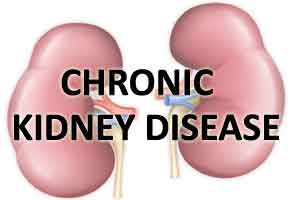- Home
- Editorial
- News
- Practice Guidelines
- Anesthesiology Guidelines
- Cancer Guidelines
- Cardiac Sciences Guidelines
- Critical Care Guidelines
- Dentistry Guidelines
- Dermatology Guidelines
- Diabetes and Endo Guidelines
- Diagnostics Guidelines
- ENT Guidelines
- Featured Practice Guidelines
- Gastroenterology Guidelines
- Geriatrics Guidelines
- Medicine Guidelines
- Nephrology Guidelines
- Neurosciences Guidelines
- Obs and Gynae Guidelines
- Ophthalmology Guidelines
- Orthopaedics Guidelines
- Paediatrics Guidelines
- Psychiatry Guidelines
- Pulmonology Guidelines
- Radiology Guidelines
- Surgery Guidelines
- Urology Guidelines
Add on patiromer to spironolactone controls resistant hypertension in CKD patients, finds clinical trial

More than half the people with chronic kidney disease (CKD) have high blood pressure. However, the use of spironolactone, an effective blood pressure-lowering drug, is restricted by hyperkalemia in these patients. In a recent phase 2 clinical trial scientists have found that the addition of Patiromer (a potassium binder) may allow the use of spironolactone in these patients and thus may offer a reduction in resistant blood pressure.
High blood pressure increases the chances of stroke and heart attack in CKD patients. In general, the blood pressure which stays at 140/90 or high is considered as high blood pressure but, for CKD patients a blood pressure of even 130/80 or higher is considered high. Patients with resistant high blood pressure or hypertension are often prescribed to use spironolactone which is effective in reducing blood pressure and thus helps prevent stroke and heart attack. Prior studies have shown that spironolactone was associated with 34% reduced risk of end-stage renal disease (ESRD) and three times greater risk of hyperkalemia in these patients.
This trial has found a strategic treatment which amy allow the use of spironolactone in CKD patients. In this phase 2 multicentre, randomised, double-blind, placebo-controlled study, the authors enrolled participants aged 18 years and older with chronic kidney disease (estimated glomerular filtration rate 25 to ≤45 mL/min per 1·73 m 2) and uncontrolled resistant hypertension from 62 outpatient centres in ten countries (Bulgaria, Croatia, Georgia, Hungary, Ukraine, France, Germany, South Africa, the UK, and the USA).
Patients meeting all eligibility criteria at the final screening visit were stratified by local serum potassium measurement (4·3 to <4·7 mmol/L vs 4·7 to 5·1 mmol/L) and history of diabetes. Participants were randomly assigned (1:1) with an interactive web response system to receive either placebo or patiromer (8·4 g once daily), in addition to open-label spironolactone (starting at 25 mg once daily) and their baseline blood pressure medications. Participants, the study team that administered treatments and measured blood pressure, and the investigators were masked to assigned treatment groups. Dose titrations were permitted after 1 week (patiromer) and 3 weeks (spironolactone). The primary endpoint was the between-group difference at week 12 in the proportion of patients on spironolactone. Efficacy endpoints and safety were assessed in all randomized patients (intention to treat).
Key findings
- 295 of 574 patients met all inclusion criteria and were randomly assigned to spironolactone in addition to double-blind treatment with either placebo (total=148) or patiromer (total=147).
- At week 12, 98 of 148 patients in the placebo group and 126 of 147 patients in the patiromer group remained on spironolactone.
- Adverse events were mostly mild or moderate in severity and occurred in 79 of 148 patients in the placebo group and 82 of 147 patients in the patiromer group.
These findings made the authors conclude "In patients with resistant hypertension and chronic kidney disease, patiromer enabled more patients to continue treatment with spironolactone with less hyperkalemia. Persistent spironolactone enablement in this population of patients has clinical relevance for the treatment of resistant hypertension."
For more details, click on the link

Disclaimer: This site is primarily intended for healthcare professionals. Any content/information on this website does not replace the advice of medical and/or health professionals and should not be construed as medical/diagnostic advice/endorsement or prescription. Use of this site is subject to our terms of use, privacy policy, advertisement policy. © 2020 Minerva Medical Treatment Pvt Ltd